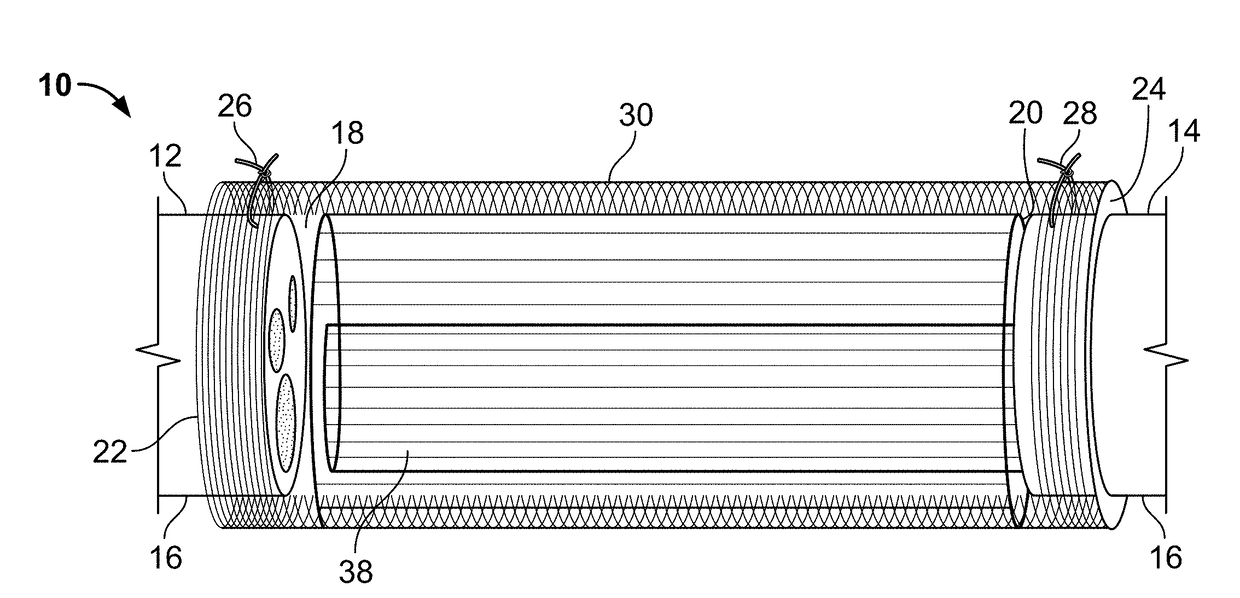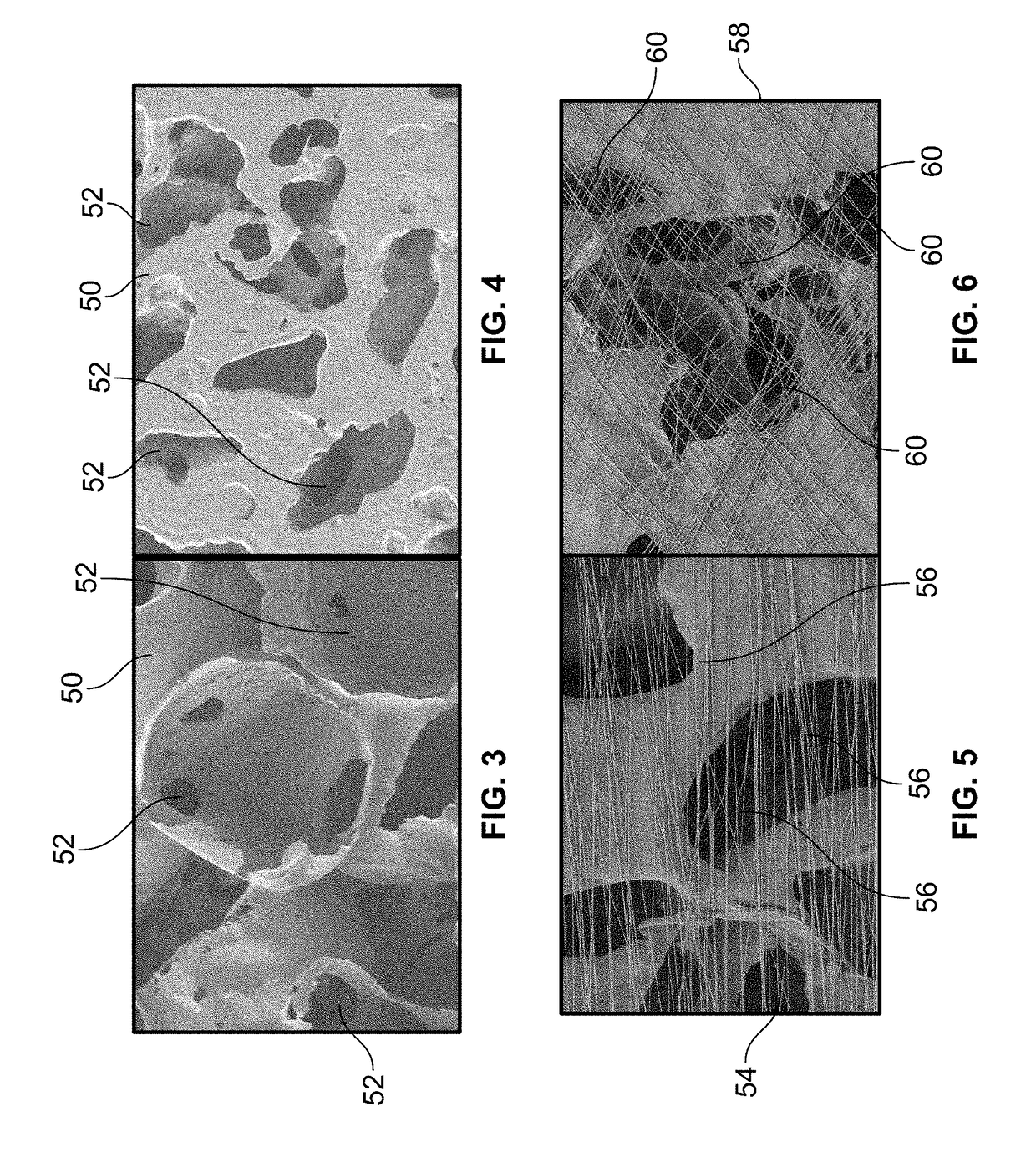Implantable nerve guidance conduits having polymer fiber guidance channel
a technology of nerve guidance and polymer fibers, can solve the problems of inability to perform end-to-end suturing, each strategy suffers from a number of limitations, and cannot be applied in the field of tissue engineering, so as to facilitate nerve tissue regeneration, increase the surface area available, and restore the function to the site of the injury
- Summary
- Abstract
- Description
- Claims
- Application Information
AI Technical Summary
Benefits of technology
Problems solved by technology
Method used
Image
Examples
first embodiment
[0046]In the present invention, the NGC has a spiral guidance channel, the spiral structure including a highly porous polycaprolactone (PCL) sheet, which may be formed as a spiral-wound sheet using known methods and decorated with surface channels on a surface of the spiral wound sheet, coated with a thin layer of aligned electrospun fibers on the surface channels, and a dense randomly-oriented fibrous tube on the outside of the NGC. Other bioresorbable materials known for use in the biomedical arts may be used in place of PCL for the sheet and fibers (e.g., collagen / PCL blends for the fibers).
second embodiment
[0047]In the present invention, the NGC has multiple spiral or cylindrically wound structures within a dense randomly-oriented fibrous tube. The spiral or cylindrically wound structures which may be formed as a spiral-wound sheet using known methods. The spiral or cylindrically wound structures may include multiple grooves along the spiral wall and, in some embodiments, in the inner wall of the fibrous tube. The wound structures and / or the inner wall of the fibrous tube, may also be decorated with nanofibers and / or other micro-architectural features that improve cell adhesion and control the direction of nerve regeneration, and make a more favorable environment for nerve regeneration. Methods of making micro-architectural features in polymer sheets and other polymer structures are known in the art. Other bioresorbable materials known for use in the biomedical arts may be used in place of PCL for the sheet and fibers (e.g., collagen / PCL blends for the fibers).
[0048]Other embodiments ...
PUM
| Property | Measurement | Unit |
|---|---|---|
| length | aaaaa | aaaaa |
| diameter | aaaaa | aaaaa |
| diameter | aaaaa | aaaaa |
Abstract
Description
Claims
Application Information
 Login to View More
Login to View More - R&D
- Intellectual Property
- Life Sciences
- Materials
- Tech Scout
- Unparalleled Data Quality
- Higher Quality Content
- 60% Fewer Hallucinations
Browse by: Latest US Patents, China's latest patents, Technical Efficacy Thesaurus, Application Domain, Technology Topic, Popular Technical Reports.
© 2025 PatSnap. All rights reserved.Legal|Privacy policy|Modern Slavery Act Transparency Statement|Sitemap|About US| Contact US: help@patsnap.com



